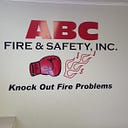Understanding Fire Extinguisher Ratings and Classes
Introduction
In the realm of fire safety, knowledge is power. Understanding the ratings and classes associated with fire extinguishers is essential for effective firefighting and protection against the diverse array of fire hazards that may arise. Fire extinguisher ratings provide crucial information about the types of fires a particular extinguisher is suitable for and its effectiveness in suppressing those fires. By familiarizing oneself with these ratings and classes, individuals can make informed decisions about selecting and using fire extinguishers to combat fires effectively.
Fire Extinguisher Classes
Fire extinguisher classes categorize extinguishers based on the types of fires they are designed to combat. The classification system is divided into several classes, each denoted by a letter representing the type of fire the extinguisher is effective against:
Class A: Class A extinguishers are suitable for fires involving ordinary combustible materials such as wood, paper, fabric, and plastics. These extinguishers typically contain water or a foam-based extinguishing agent.
Class B: Class B extinguishers are designed for fires fueled by flammable liquids and gases, including gasoline, oil, grease, and solvents. They often contain dry chemical agents or carbon dioxide (CO2) to suppress these types of fires.
Class C: Class C extinguishers are intended for fires involving energized electrical equipment, such as electrical panels, wiring, and appliances. These extinguishers use non-conductive extinguishing agents to avoid the risk of electric shock.
Class D: Class D extinguishers are specifically designed for fires involving combustible metals, such as magnesium, titanium, and sodium. These fires are rare but can be extremely hazardous if not properly extinguished with specialized extinguishing agents.
Class K: Class K extinguishers are tailored for fires involving cooking oils, fats, and grease commonly found in commercial kitchens. They use a specialized wet chemical agent to extinguish these high-temperature fires effectively.
Fire Extinguisher Ratings
Fire extinguisher ratings provide information about the extinguishing agent’s effectiveness and the extinguisher’s coverage area. Ratings are typically expressed in numerical values and letters, with higher numbers indicating greater effectiveness:
Class A Rating: The Class A rating represents the extinguisher’s effectiveness against Class A fires involving ordinary combustible materials. The numerical rating indicates the extinguisher’s capacity to suppress fires of this type.
Class B Rating: The Class B rating indicates the extinguisher’s effectiveness against Class B fires fueled by flammable liquids and gases. Like the Class A rating, the numerical value corresponds to the extinguisher’s suppression capacity.
Class C and Class D Ratings: Unlike Class A and Class B extinguishers, Class C and Class D extinguishers do not have numerical ratings. Instead, they are labeled with the letter “C” or “D” to denote their suitability for combating specific types of fires.
Choosing the Right Fire Extinguisher
Selecting the appropriate fire extinguisher for a particular environment or application requires careful consideration of the potential fire hazards present. For example, a residential kitchen may benefit from a Class K extinguisher to address grease fires, while a garage or workshop may require a Class B extinguisher to combat flammable liquid fires. Likewise, commercial or industrial facilities with electrical equipment may necessitate Class C extinguishers to address potential electrical fires.
Proper Usage and Maintenance
Using a fire extinguisher effectively requires more than just selecting the right class and rating — it also entails proper training and technique. Individuals should familiarize themselves with the PASS method:
Pull: Pull the pin to break the seal and prepare the extinguisher for use.
Aim: Aim the nozzle or hose at the base of the fire, not the flames.
Squeeze: Squeeze the handle to discharge the extinguishing agent.
Sweep: Sweep the nozzle or hose from side to side, covering the base of the fire with the extinguishing agent until the flames are fully suppressed.
In addition to proper usage, regular maintenance and inspection are essential to ensure that fire extinguishers remain operational and ready for use when needed. Inspections should be conducted according to manufacturer guidelines and regulatory requirements, with any deficiencies addressed promptly to maintain the extinguisher’s effectiveness.
Conclusion
In conclusion, fire extinguisher and classes is essential for effective fire safety and protection. By familiarizing oneself with these classifications, individuals can make informed decisions about selecting the right extinguisher for specific fire hazards and environments. Proper training in fire extinguisher usage and maintenance further enhances preparedness and ensures that extinguishers are ready to serve as effective tools in combating fires and minimizing their potential impact on lives and property.
